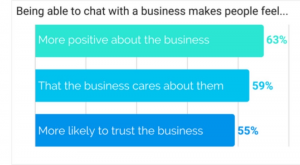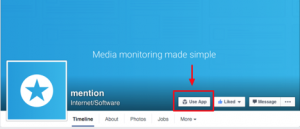By Lisa Bodell
With so much importance placed on connecting and collaborating, why is it so unproductive?
Collaborative work has become overwhelming and ineffective. On average, we spend 85% of our time in meetings, on emails, on phone calls, and on Slack. It’s too easy to schedule a meeting (just send a Teams link!) and too hard to decipher its purpose (seriously, what’s the agenda?).
We’re connected, but we’re not really connecting. Harvard Business Review stated that while more than 80% of managers believe that good collaboration is critical, only 20% are satisfied with how it happens. Status meeting, anyone?
Improving how we connect and collaborate would have a huge impact. When citing the benefits of stronger teamwork, employees emphasize that it would improve not just productivity but also foster innovation, creativity, and engagement.
Try these tips to turn the typical drudgery of connecting into a transformative experience.
Eliminate time sucks
Make space for better collaboration by stopping what’s in your way.
Do a meeting audit: List all your recurring meetings—daily, weekly, monthly, quarterly—with the goal of eliminating as many as possible. Has a certain meeting outlived its time? Cancel it. Need to keep it? Lessen the frequency or put it on a time diet (30 minutes is the new 60 minutes).
By eliminating unnecessary meetings and streamlining existing ones, Shopify is on track to save over 322,000 hours of employee time that can be devoted to more productive activities. A wave of innovation has since swept through the company, fueled by fresh ideas from employees who now have time for creativity and strategic imagination.
Kill stupid rules: Ask your team: If you could get rid of any rules that hold you back from being more effective or innovative at work, what would you eliminate? You’ll be shocked at the meaningless and mundane things that can be purged immediately. Canceling annoying rules helped AT&T give back an estimated three million hours back to employees for more important work.
Timebox: Stop context switching and take control of your calendar by grouping similar meetings together. This lets you free up larger chunks of time to focus and connect with others on more important work. Team 1:1 meetings? Do them all on the same day. Recurring meetings? Tuesdays and Thursdays.
The goal is to make space and time to think with less stress. Seanna McGough, CHRO at Regions Bank, was shocked at how something so simple could be so transformative. “I went from having tasks scattered throughout the week to freeing up large chunks of time to think and be more strategic.”
Be more intentional
It’s important to define how to best connect and communicate with clarity around why we’re meeting in the first place.
Make collaborating fit for purpose: There are better ways to meet than the default online meeting. Think through how to connect to better achieve your goal. For example: meetings are best for debate, discussion, and problem-solving. Emails are for updates and information. Slack and Chat are for urgency and immediacy. In-person sessions are ideal for ideation, strategic discussions, and team building.
Turn agendas into questions: Put an end to people asking: “Why are we meeting again?” Send out meeting invites where the subject line states the question you’re trying to answer in the meeting. Better yet, change meeting agendas from lists of statements to questions that each topic is raising. This shifts participants into problem-solving mode and (even better) makes the person setting up the meeting think about why they want to convene in the first place.
Shake it up
We get the same results because we always meet with the same people in the same ways. Let’s make connecting more innovative. Use the time together to get fresh ideas and to creatively solve problems.
Questionstorm: Want better ideas? First, ask better questions. Teach your team to ask thought-provoking questions and be more curious. Use your time together to ask “What are some unconventional ways we could attack this issue?” or “How would our competitors solve this problem?”
Run a work hack: Stuck in a rut? Do you have a process that takes too long? I’ll bet people have a work-around but are scared to share it, or, have never been asked. Gather a cross-functional team and invite them to share ways they would (or already do) improve something too complicated.
Outside-in meeting: There’s comfort in collaborating with people we know. But if you want different ideas, you need different perspectives. Do what Westin Hotels once did by inviting disgruntled customers into their ideation sessions. Or, try what groups within HBO once did by letting employees bring a +1 to a brainstorm from another business unit, or from outside the company.
Connecting should be energizing, and purposeful, and accomplish something that moves us forward, not backward. So, let’s break free from the chains of soul-sucking meetings and redefine how we connect and collaborate in 2024. Your team’s productivity will thank you.
(12)









